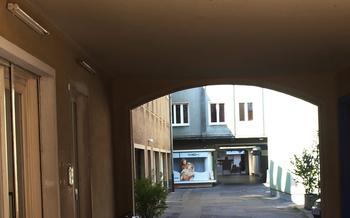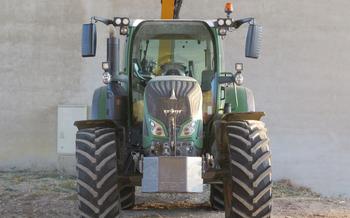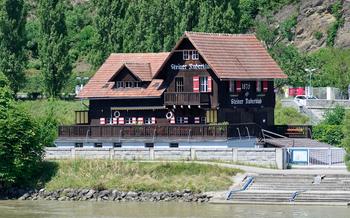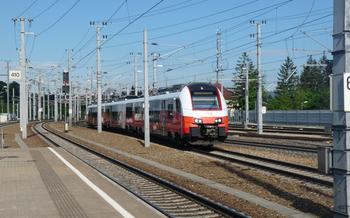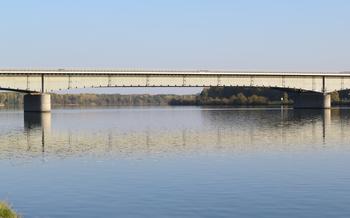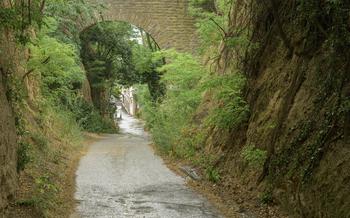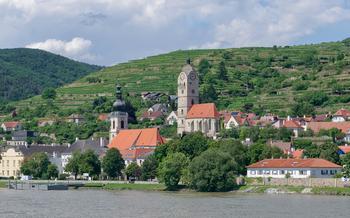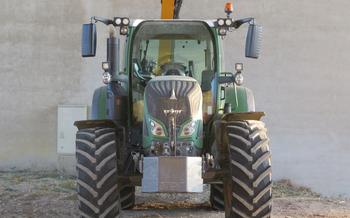
Waldviertel Mystic Trail
- Krems an der Donau: A Charming Gateway to the Waldviertel Mystic Trail
- Exploring the Legends and Myths of the Waldviertel Mystic Trail
- Planning Your Mystic Trail Adventure
- Unveiling the Secrets of Stage 2: Gföhl to Groß Gerungs
- Conquering Stage 3: Groß Gerungs to Rappottenstein
- Reaching the Heart of the Trail: Stage 4
- Discovering Stage 5: Rappottenstein to Arbesbach
- Completing the Journey: Stage 6
- Accommodation and Dining Options
- Transportation and Getting Around
- Packing Essentials and Safety Tips
- Cultural Insights and Local Traditions
Krems an der Donau: A Charming Gateway to the Waldviertel Mystic Trail
Krems an der Donau, a picturesque town nestled along the Danube River, serves as a captivating gateway to the legendary Waldviertel Mystic Trail. Steeped in historical significance, the town boasts a rich tapestry of medieval architecture, including the iconic Steiner Tor, a 13th-century gate tower that stands as a testament to the town's fortified past. Krems an der Donau is also renowned for its vibrant cultural scene, with art galleries, museums, and theaters showcasing the region's artistic heritage.
With its proximity to the Waldviertel region, Krems an der Donau offers the ideal starting point for embarking on the mystical trail. The town's cobblestone streets and colorful buildings set the tone for an adventure into the realm of ancient legends and enchanting landscapes. Whether you choose to explore the trail on foot or by bicycle, Krems an der Donau provides a welcoming base camp for your journey into the heart of the Waldviertel's mystical realm.
Reaching Krems an der Donau is a breeze, with excellent transportation links connecting the town to major cities in Austria and beyond. Whether you arrive by car, train, or bus, you'll find yourself immersed in the town's charm and ready to embark on your mystical adventure along the Waldviertel Mystic Trail.
Exploring the Legends and Myths of the Waldviertel Mystic Trail
The Waldviertel Mystic Trail is steeped in ancient legends and myths, adding an enchanting aura to the hiking experience. The Waldviertel region has long been a source of inspiration for storytellers, with tales passed down through generations. These stories often revolve around mythical creatures, hidden treasures, and supernatural occurrences.
One of the most prominent legends associated with the trail is that of the "Waldviertel Dragon." According to local folklore, this fearsome creature once terrorized the region until a brave knight defeated it in a legendary battle. The trail passes by several locations said to be connected to the dragon's legend, including the Drachenstein Castle and the Drachenhöhle (Dragon's Cave).
Another popular tale is that of the "Treasure of the Knights Templar." Legend has it that the Knights Templar hid their vast wealth in the Waldviertel region during the Middle Ages. Many treasure hunters have attempted to find the hidden riches, but none have succeeded. The trail offers opportunities to explore some of the rumored hiding places, adding an element of adventure to the journey.
As you hike along the trail, keep an ear out for the locals' stories and legends. Each village and town you pass through has its own unique tales to tell. Embrace the mystical atmosphere of the Waldviertel and let your imagination run wild as you immerse yourself in the region's rich folklore.
Planning Your Mystic Trail Adventure
To ensure a successful journey on the Waldviertel Mystic Trail, careful planning is essential. Here's a practical guide to help you prepare:
Choosing the Right Time: The best time to experience the trail is during the spring (April-May) and autumn (September-October) when the weather is pleasant and the landscapes are at their most vibrant. Avoid the summer months (June-August) due to the heat and crowds, and winter (November-March) due to snow and icy conditions.
Essential Packing List: Pack comfortable hiking shoes or boots, breathable clothing suitable for various weather conditions, a raincoat or poncho, a hat, sunglasses, sunscreen, a water bottle, snacks, a first-aid kit, and a flashlight. Consider bringing a camera to capture the stunning scenery along the way.
Accommodation Options: Along the trail, you'll find a range of accommodation options, from cozy guesthouses and bed and breakfasts to traditional inns and hotels. In Krems an der Donau, there are more extensive accommodation options, including modern hotels, charming guesthouses, and self-catering apartments.
Maps and Resources: To navigate the trail, it's recommended to purchase a detailed map or guidebook. Several resources are available online and at local tourist information offices. Additionally, GPS devices or smartphone apps can provide real-time navigation and information about points of interest.
Unveiling the Secrets of Stage 2: Gföhl to Groß Gerungs
The second stage of the Waldviertel Mystic Trail takes you on a journey through the heart of the Waldviertel region, revealing its rich cultural heritage and natural wonders. Starting in the picturesque town of Gföhl, you'll follow ancient paths that wind through charming villages, past medieval castles, and into the depths of mystical forests.
Must-see destinations along this stage include the imposing Rosenburg Castle, perched atop a hill overlooking the Kamp Valley. Immerse yourself in the castle's fascinating history as you explore its grand halls and admire its impressive collection of armor and weaponry.
Don't miss the opportunity to visit the Zwettl Abbey, a stunning example of Cistercian architecture. Founded in the 12th century, the abbey is renowned for its intricate carvings, beautiful cloisters, and serene atmosphere. Take a guided tour to learn about the abbey's rich history and admire its impressive collection of religious artifacts.
As you continue on your journey, marvel at the stunning views from the observation tower on the Hoher Stein, the highest point in the Waldviertel region. From here, you can see for miles across the rolling hills and forests that make up this enchanting landscape.
Distance and elevation gain: - Distance: 22 kilometers (7 miles) - Elevation gain: 600 meters (1,969 feet)
Conquering Stage 3: Groß Gerungs to Rappottenstein
The third stage of the Waldviertel Mystic Trail promises an exhilarating journey through picturesque landscapes and cultural treasures. Embarking from Groß Gerungs, hikers are greeted by stunning panoramic views as they ascend to the plateau. Along the way, the trail leads through mystical forests, where ancient legends and folklore come alive.
One of the highlights of this stage is the medieval town of Gmünd, with its well-preserved fortifications and charming cobblestone streets. Visitors can explore the Gmünd Castle, which houses a fascinating museum dedicated to the history and culture of the region.
Continuing on the trail, hikers encounter the Stift Altenburg, a former Benedictine monastery that now serves as a cultural center. The monastery's impressive architecture and serene atmosphere make it a popular destination for pilgrims and history enthusiasts alike.
As the trail progresses, hikers are rewarded with breathtaking views of the Waldviertel countryside, dotted with rolling hills, lush meadows, and sparkling streams. The route also passes through several charming villages, where traditional customs and hospitality can still be experienced.
The third stage concludes in the picturesque town of Rappottenstein, where hikers can rest weary legs and soak up the town's medieval charm. The town square, with its colorful facades and lively atmosphere, is the perfect place to relax and reflect on the day's adventures.
In terms of duration and difficulty, Stage 3 is considered moderate, with a distance of approximately 25 kilometers and a total elevation gain of 700 meters. Hikers should plan for a full day of trekking to fully appreciate the natural beauty and cultural heritage along the way.
Reaching the Heart of the Trail: Stage 4
Venturing into the fourth stage of the Waldviertel Mystic Trail, hikers embark on a journey that leads them to the very heart of the region. This stage is marked by a profound sense of tranquility and spiritual connection, as it traverses ancient forests and passes by pilgrimage churches that radiate a serene atmosphere. The trail unveils a rich tapestry of natural and cultural wonders, including the mystical Heidenreichstein Pilgrimage Church, which is believed to possess miraculous healing powers.
Along the way, hikers are treated to breathtaking panoramic views that stretch across the rolling hills and valleys of the Waldviertel. The trail meanders through idyllic meadows, where wildflowers bloom in vibrant hues, and the air is filled with the sweet fragrance of nature. Reaching the geographic center of the Waldviertel, hikers encounter the mystical heart of the trail, a place of profound energy and spiritual significance. Here, they can pause to reflect on their journey and connect with the essence of the region.
The fourth stage of the trail offers a moderate level of difficulty, with a distance of approximately 20 kilometers and an elevation gain of around 500 meters. The well-maintained paths make it suitable for hikers of all levels, inviting them to immerse themselves in the enchanting beauty of the Waldviertel and discover the secrets that lie at its heart.
Discovering Stage 5: Rappottenstein to Arbesbach
The fifth stage of the Waldviertel Mystic Trail offers a captivating blend of history, nature, and local culture. Beginning in the charming town of Rappottenstein, this stage takes you on a journey through rolling hills, lush forests, and picturesque villages. Along the way, you'll encounter a series of captivating attractions that showcase the region's rich heritage and natural beauty.
One of the highlights of this stage is Rappottenstein Castle, a magnificent 12th-century fortress that dominates the skyline of the town. With its imposing towers, intricate stonework, and well-preserved interiors, the castle offers a fascinating glimpse into the region's medieval past.
Continuing on the trail, you'll pass through the village of Schönbach, home to the Waldviertel Motorcycle Museum. This unique museum houses an impressive collection of vintage motorcycles, providing a nostalgic journey through the history of two-wheeled transportation.
As you approach Arbesbach, the endpoint of this stage, you'll be rewarded with breathtaking views of the surrounding countryside from the Heubühlwarte, a scenic viewpoint located on a hilltop. Take a moment to soak in the panoramic vistas before descending into Arbesbach, a charming town known for its well-preserved historic center and vibrant cultural scene.
Throughout Stage 5, you'll have the opportunity to delve deeper into the local history and legends associated with the region. Visit the Arbesbach Museum, which houses exhibits on the town's past, including its role in the Waldviertel peasant uprising of 159
For nature enthusiasts, this stage offers plenty of opportunities to explore the region's natural wonders. Hike through the Großer Kamp Nature Reserve, home to a diverse array of flora and fauna, including rare orchids and majestic birds of prey. Take a refreshing dip in the Arbesbach Swimming Lake, a popular spot for locals and visitors alike.
Whether you're a history buff, a nature lover, or simply seeking a unique and enriching experience, Stage 5 of the Waldviertel Mystic Trail promises an unforgettable journey.
Completing the Journey: Stage 6
The sixth and final stage of the Waldviertel Mystic Trail is a triumphant return to Krems an der Donau, where the journey began. This stage offers a diverse range of attractions, including vineyards, monasteries, and historical landmarks, making it a fitting conclusion to the mystical adventure.
As you embark on this final leg, the trail leads you through scenic landscapes dotted with charming villages and rolling hills. Immerse yourself in the tranquility of vineyards, where you can savor local wines and learn about the region's viticulture. Take a break at one of the many monasteries along the way, where you can admire their architectural grandeur and experience the serene atmosphere.
As you approach Krems an der Donau, the trail takes you past historical landmarks that tell the story of the town's rich past. Visit the Göttweig Abbey, a Benedictine monastery perched on a hilltop, offering panoramic views of the surrounding countryside. Explore the Krems Steinertor, a fortified gate that once guarded the entrance to the town.
Celebrate your accomplishment as you cross the finish line in Krems an der Donau. Reflect on the transformative experiences, the legends and myths you encountered, and the personal growth you achieved throughout your journey on the Waldviertel Mystic Trail. Savor the satisfaction of completing this remarkable adventure and cherish the memories that will last a lifetime.
Duration and Difficulty Level of Stage 6:
The sixth stage of the Waldviertel Mystic Trail is approximately 20 kilometers (4 miles) in length and can be completed in 5-6 hours. The difficulty level is moderate, with some uphill sections and uneven terrain. Proper footwear and hiking poles are recommended for a comfortable trek.
Accommodation and Dining Options
The Waldviertel Mystic Trail offers a diverse range of accommodation options to suit every traveler's needs and budget. From cozy guesthouses and charming bed and breakfasts to rustic cabins and modern hotels, there are plenty of places to rest and recharge along the way. Many accommodations are family-run and offer a warm and welcoming atmosphere, allowing you to experience the genuine hospitality of the region.
When it comes to dining, the Waldviertel region is a culinary paradise, offering a delightful array of local specialties and traditional Austrian cuisine. Indulge in hearty dishes made with fresh, locally sourced ingredients, such as hearty soups, flavorful stews, and delectable pastries. Don't miss the chance to sample the region's renowned wines, produced in the picturesque vineyards along the trail.
For a truly immersive experience, consider booking a stay at one of the many farms or guesthouses along the trail that offer farm-to-table dining experiences. These establishments provide an opportunity to savor authentic Waldviertel cuisine prepared with the freshest ingredients, often grown right on the premises.
Whether you prefer a rustic retreat or a more modern accommodation, the Waldviertel Mystic Trail has something to offer every traveler. Embrace the region's charm and hospitality as you indulge in the culinary delights and warm ambiance of the Waldviertel.
Transportation and Getting Around
Navigating the Waldviertel Mystic Trail requires careful planning, as public transportation options are limited in some areas. The most convenient way to reach the trailhead in Krems an der Donau is by train, with regular connections from Vienna and other major cities. Once on the trail, hikers can rely on buses and taxis to travel between stages. It's advisable to check timetables in advance and plan accordingly to avoid long waits.
For a more flexible and immersive experience, consider renting a bicycle. Several bike rental shops are available in Krems an der Donau, offering a wide range of options, including electric bikes for those who prefer a leisurely ride. Guided tours are also available for those who prefer a more structured experience, with knowledgeable guides leading the way and sharing insights into the region's history and culture.
Packing Essentials and Safety Tips
Essential Items: - Sturdy hiking boots or shoes with good ankle support - Breathable clothing suitable for all weather conditions - Rain gear and a small umbrella for unexpected showers - A backpack with ample space for snacks, water, and other essentials - A map and compass or a GPS device for navigation - A flashlight or headlamp for night-time hiking or emergencies - A first-aid kit with basic supplies for minor injuries - Sunscreen, sunglasses, and a hat to protect from the sun - Insect repellent to keep away pesky mosquitoes and ticks
Safety Tips: - Always inform someone about your hiking plans and expected return time. - Stay on marked trails to avoid getting lost or disturbing wildlife. - Be aware of your surroundings and potential hazards like slippery rocks or steep cliffs. - Carry enough water and snacks to stay hydrated and energized throughout the hike. - Respect the local flora and fauna by not disturbing or damaging the natural environment. - Follow local regulations and guidelines regarding camping, fires, and waste disposal.
Cultural Insights and Local Traditions
As you traverse the Waldviertel Mystic Trail, immerse yourself in the captivating customs and traditions of the region. Engage with the locals, known for their warm hospitality and rich storytelling abilities. Participate in traditional festivals, such as the colorful harvest festivals or the lively village fairs, where you can witness authentic music, dance, and local delicacies. Visit local museums and cultural centers to learn about the region's fascinating history, from ancient settlements to medieval monasteries. Don't miss the chance to sample the local cuisine, which features hearty dishes made with fresh, seasonal ingredients, accompanied by the region's renowned wines. Embrace the opportunity to connect with the locals, who are passionate about preserving their cultural heritage and sharing it with visitors.
